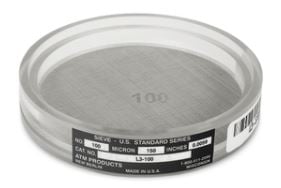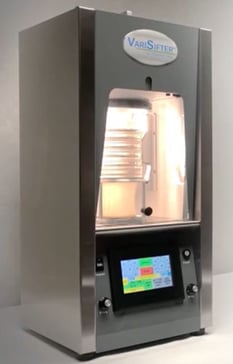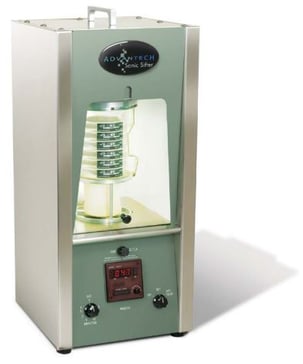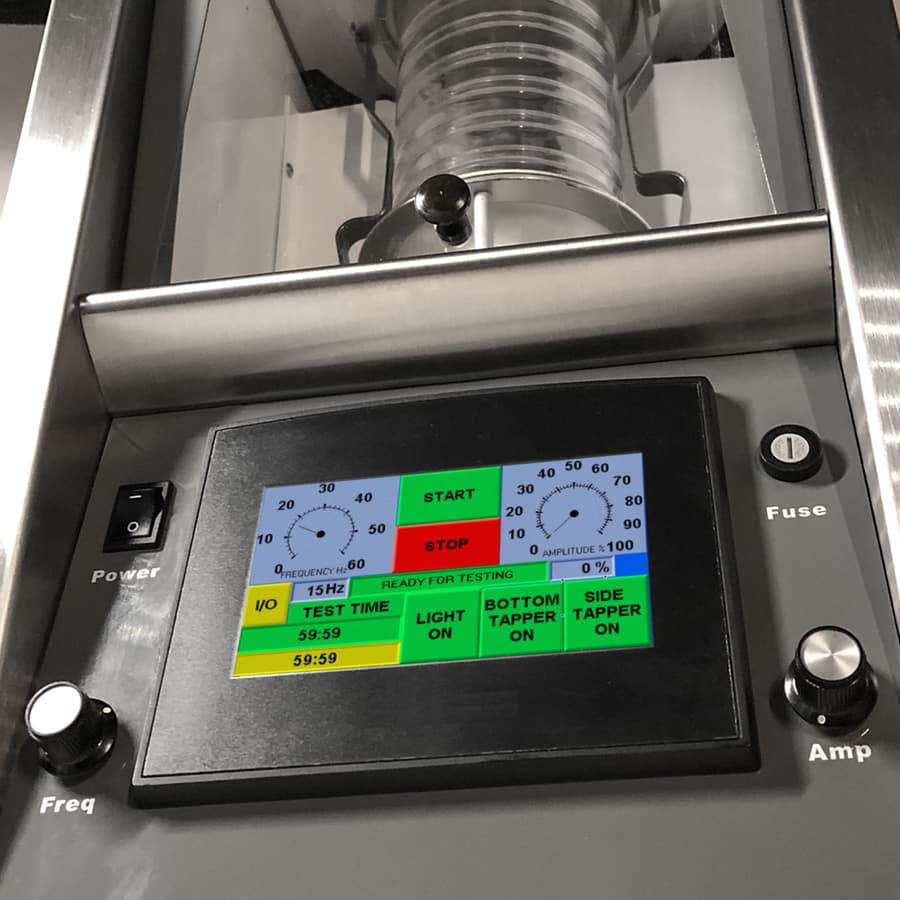What Is a Sonic Sifter? (Definition, Functions, and Cost)
Despite being decades old, test sieve analysis stands as one of the most widely used forms of particle size analysis. Its undeniable ability to produce accurate and repeatable results has placed it into dozens of industry standards across the globe.
Now, while the test sieve itself has remained relatively unchanged for decades, the devices used to facilitate particle movement throughout a stack of sieves have. Sonic sifters, for example, helped to remove the brute force associated with traditional sieve shakers, resulting in a quitter particle analysis process that is less harsh on your sieves.
But what exactly is a sonic sifter?
W.S. Tyler has been a pioneer of innovation in the particle analysis industry for 140 years, and when it comes to the various testing equipment, we’ve seen it all. Over the years, we’ve grown to feel accountable to be as transparent as possible so you can navigate the particle analysis market and build out a lab setting that is right for you.
To help you determine whether or not sonic sifters make sense for your needs, we put the following article to establish:
- What a sonic sifter is
- How sonic sifters work
- What test sieves sonic sifters are compatible with
- Maintenance associated with sonic sifters
- How much sonic sifters cost
What Is a Sonic Sifter?
Sonic sifters are particle size analysis devices designed to generate reliable particle distribution curves when testing fine particles. They do so by leveraging sonic waves to generate an air vacuum as well as a latex bladder to tap the bottom of a test sieve stack.
Because the tapping motion comes from below, the particles are projected upwards and hit the bottom of the above test sieve. This makes sonic sifters particularly useful when working with particles that often become agglomerated.
How Do Sonic Sifters Work?
Sonic sifters generate an air column that oscillates and creates a specific number of agitating sonic waves per minute. A bladder attached to the bottom of the test sieve stack pulsates simultaneously, essentially mimicking the tapping motion of traditional mechanical sieve shakers like the W.S. Tyler RO-TAP® RX-29.
This tapping motion can be toggled on or off to best accommodate the material you are testing.
Now, most devices allow you to adjust the sonic wave amplitude. This will enable you to feel confident in your results regardless of the density or texture of your material.
What Test Sieves Can Be Used With Sonic Sifters?

Most sonic sifter devices are designed to house 3-inch acrylic sieves. These sieves are typically transparent to allow you to view how your material passes through the various sieves in the test sieve stack.
Having said that, there are devices on the market that allow you to test material using more traditional (i.e., 8-inch) test sieves.
What Maintenance Is Required?
Much like electromagnetic sieve shakers, sonic sifters require minimal moving parts to test material accurately. As a result, little to no maintenance is required.
To preserve your investment and ensure you continue to yield accurate results consistently, it is recommended that you keep your device free of debris, whether it be dust or residual sample material from previous testing. This should be done using a non-abrasive, damp towel.
How Much Do Sonic Sifters Cost?
Naturally, the price you can expect to pay for a sonic sifter depends on the model and manufacturer. To give you an idea of what you can expect, below are the prices of the two sonic sifter models W.S. Tyler currently offers:
VariSifter® Sonic Separator

Equipped with a user-friendly touch interface, the VariSifter Sonic Separator provides a state-of-the-art sonic sifter experience. It allows particle analysis labs to accurately test fine particles ranging from 3 μm to 5.6 mm.
Price: $8,249.99 (approximately)
L3P Sonic Sifter Separator

The L3P sonic sifter separator is designed to recreate the performance of a wet sieve analysis while eliminating the need for water or specialized equipment. It is proven to help reduce testing times by up to 90% and is meant to test dry material ranging from 3 μm to 5.6 mm.
Price: $7,456 (approximately)
Get To Know How Sonic Sifters Stack Up Against Sieve Shakers
Sonic sifters are particle analysis testing devices designed to accurately test fine particles. It generates an air vacuum that works hand in hand with a tapping motion on the bottom of the test sieve stack, breaking up particle agglomeration and promoting particle movement.
Now, you may have noticed that we mentioned traditional sieve shakers several times throughout the article. This is because they remain the gold standard when attempting to achieve accurate and repeatable sieve analysis results.
And for this reason, you must come to understand the ways sonic sifters and sieve shakers compare before investing in either.
W.S. Tyler strives to help remove the obstacles that hinder the success of your particle analysis operation by openly sharing the experiences we’ve had and the knowledge we acquired over the past 140 years.
To help guide you through the decision-making process, the following article was designed to highlight the differences and similarities that exist when comparing sonic sifters to sieve shakers:
About Ronnie Brown
Ronnie is the Content Writer for W.S. Tyler and has four years of experience as a professional writer. He strives to expand his knowledge on all things particle analysis and woven wire mesh to leverage his exceptional writing and graphic design skills, creating a one-of-a-kind experience for customers.



